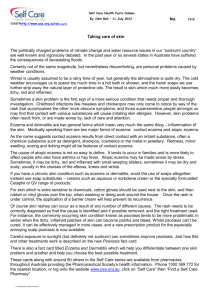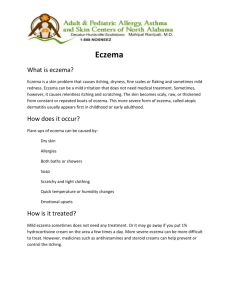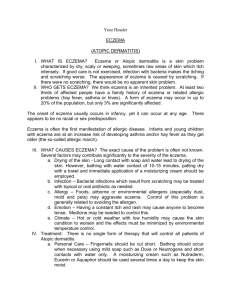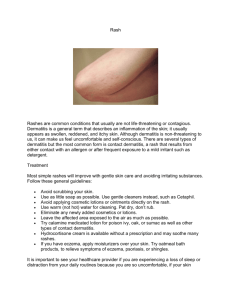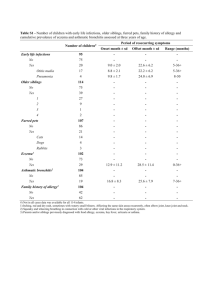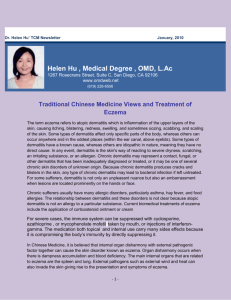No. 1271 http://www.psa.org.au/selfcare Looking after our largest
advertisement
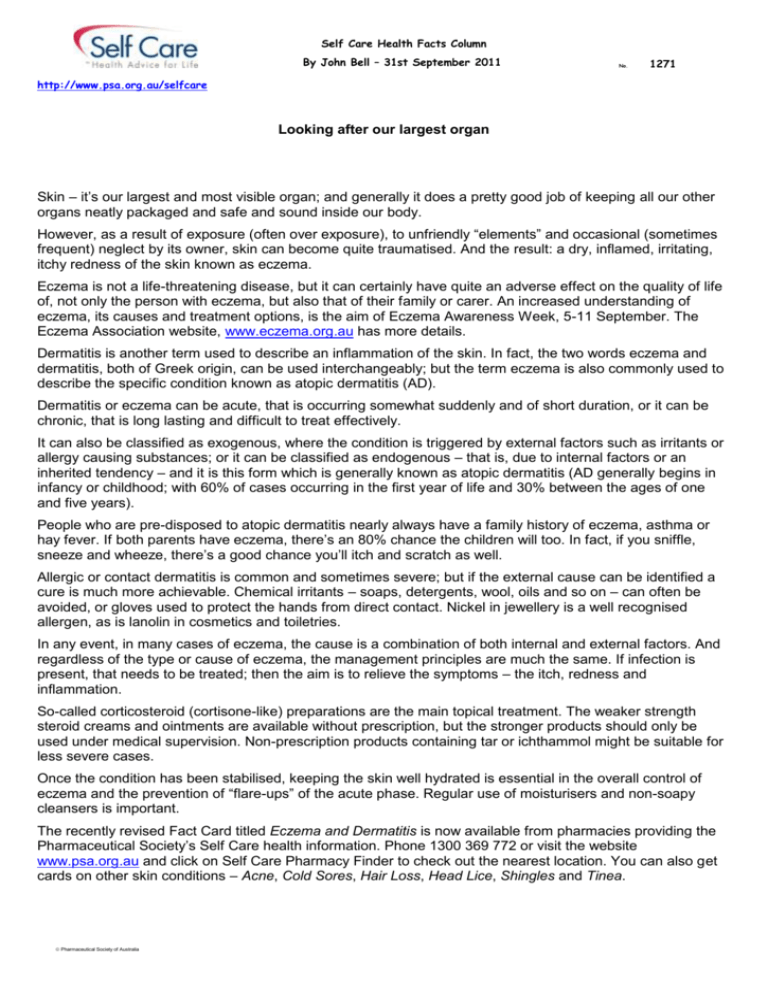
Self Care Health Facts Column By John Bell – 31st September 2011 No. 1271 http://www.psa.org.au/selfcare Looking after our largest organ Skin – it’s our largest and most visible organ; and generally it does a pretty good job of keeping all our other organs neatly packaged and safe and sound inside our body. However, as a result of exposure (often over exposure), to unfriendly “elements” and occasional (sometimes frequent) neglect by its owner, skin can become quite traumatised. And the result: a dry, inflamed, irritating, itchy redness of the skin known as eczema. Eczema is not a life-threatening disease, but it can certainly have quite an adverse effect on the quality of life of, not only the person with eczema, but also that of their family or carer. An increased understanding of eczema, its causes and treatment options, is the aim of Eczema Awareness Week, 5-11 September. The Eczema Association website, www.eczema.org.au has more details. Dermatitis is another term used to describe an inflammation of the skin. In fact, the two words eczema and dermatitis, both of Greek origin, can be used interchangeably; but the term eczema is also commonly used to describe the specific condition known as atopic dermatitis (AD). Dermatitis or eczema can be acute, that is occurring somewhat suddenly and of short duration, or it can be chronic, that is long lasting and difficult to treat effectively. It can also be classified as exogenous, where the condition is triggered by external factors such as irritants or allergy causing substances; or it can be classified as endogenous – that is, due to internal factors or an inherited tendency – and it is this form which is generally known as atopic dermatitis (AD generally begins in infancy or childhood; with 60% of cases occurring in the first year of life and 30% between the ages of one and five years). People who are pre-disposed to atopic dermatitis nearly always have a family history of eczema, asthma or hay fever. If both parents have eczema, there’s an 80% chance the children will too. In fact, if you sniffle, sneeze and wheeze, there’s a good chance you’ll itch and scratch as well. Allergic or contact dermatitis is common and sometimes severe; but if the external cause can be identified a cure is much more achievable. Chemical irritants – soaps, detergents, wool, oils and so on – can often be avoided, or gloves used to protect the hands from direct contact. Nickel in jewellery is a well recognised allergen, as is lanolin in cosmetics and toiletries. In any event, in many cases of eczema, the cause is a combination of both internal and external factors. And regardless of the type or cause of eczema, the management principles are much the same. If infection is present, that needs to be treated; then the aim is to relieve the symptoms – the itch, redness and inflammation. So-called corticosteroid (cortisone-like) preparations are the main topical treatment. The weaker strength steroid creams and ointments are available without prescription, but the stronger products should only be used under medical supervision. Non-prescription products containing tar or ichthammol might be suitable for less severe cases. Once the condition has been stabilised, keeping the skin well hydrated is essential in the overall control of eczema and the prevention of “flare-ups” of the acute phase. Regular use of moisturisers and non-soapy cleansers is important. The recently revised Fact Card titled Eczema and Dermatitis is now available from pharmacies providing the Pharmaceutical Society’s Self Care health information. Phone 1300 369 772 or visit the website www.psa.org.au and click on Self Care Pharmacy Finder to check out the nearest location. You can also get cards on other skin conditions – Acne, Cold Sores, Hair Loss, Head Lice, Shingles and Tinea. Pharmaceutical Society of Australia

